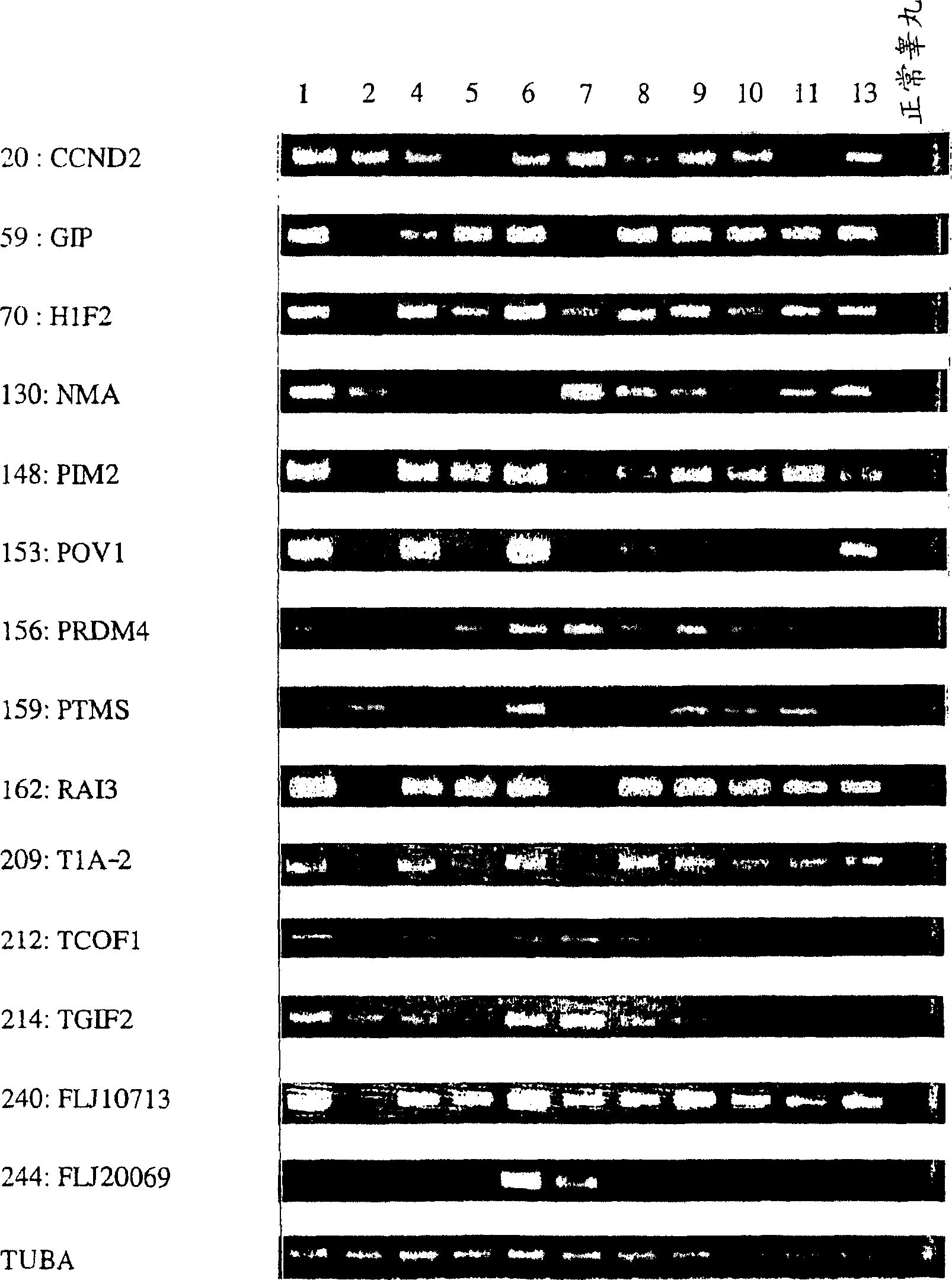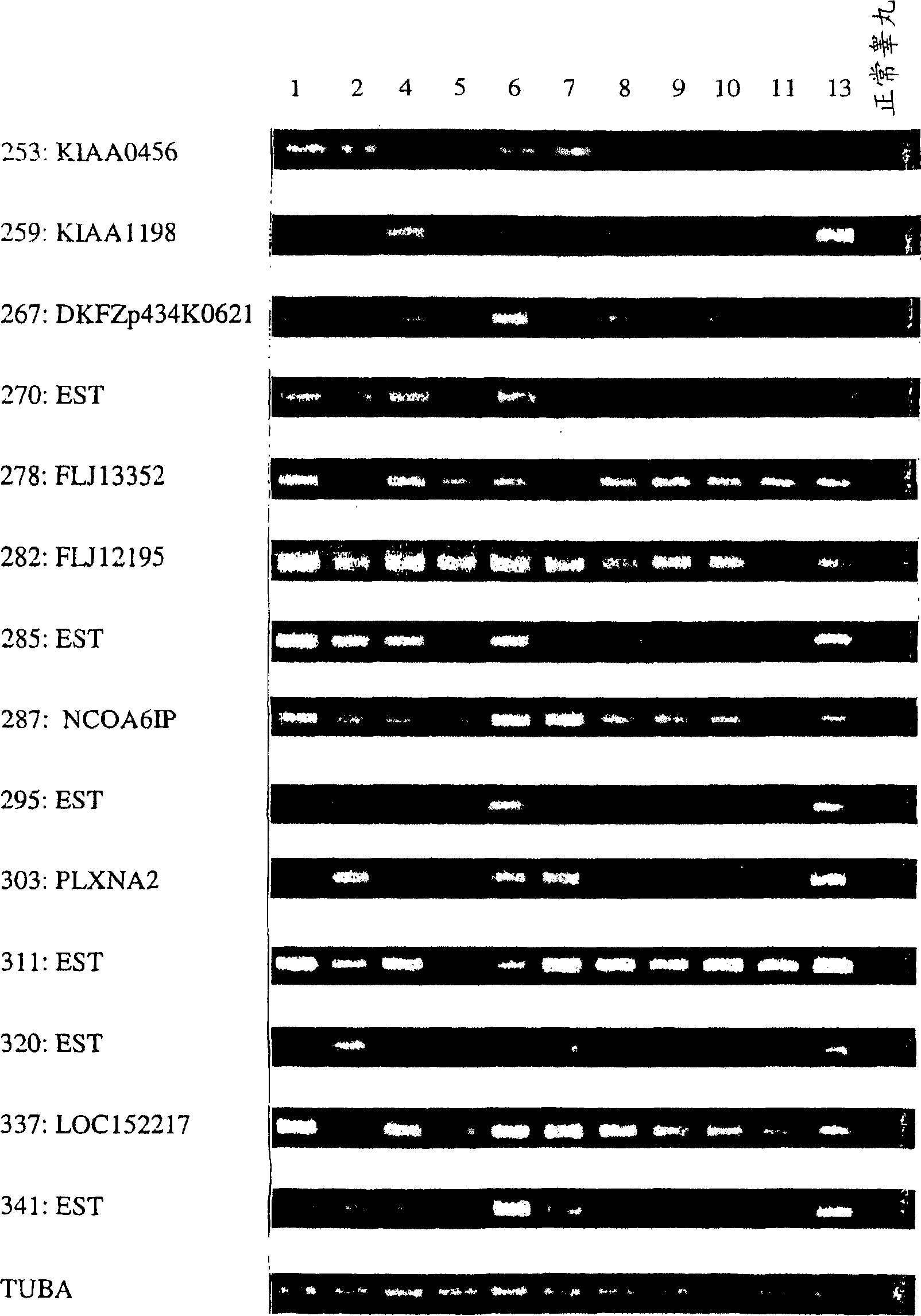Method for diagnosing testicular seminomas
A subject, selected technology, applied in the field of diagnosing testicular seminoma
- Summary
- Abstract
- Description
- Claims
- Application Information
AI Technical Summary
Problems solved by technology
Method used
Image
Examples
Embodiment 1
[0168] Example 1: Preparation of test samples
[0169] Tissues obtained from diseased tissues (for example, testicular cells from testicular germ cell tumors) and normal tissues are evaluated to identify differentially expressed genes or disease states, for example, TS. The test is carried out as follows.
[0170] Patient, tissue sample, and microdissection (LCM) obtained by laser
[0171] TGCT samples were obtained from 13 patients undergoing orchiectomy. The clinical characteristics of these patients are summarized in Table 1. Twelve samples diagnosed with seminoma and 1 sample with both seminoma and yolk sac tumor were used.
[0172] All samples were frozen at -80°C and then embedded in TissueTek OCT medium (Sakura). Frozen specimens were serially sectioned in 8-μm sections using a cryostat (Sakura) and stained with hematoxylin and eosin to clarify the analysis area. Then, the PixCell II LCM System (Arcturus Engineering) was used to selectively microscopically isolate seminom...
Embodiment 2
[0180] Example 2: Identification of TS-related genes
[0181]When identifying an up-regulated or down-regulated gene common to TS, analyze the gene according to the following criteria. Select the starting gene whose relative expression level can be calculated in more than 50% of cases and whose expression is up-regulated or down-regulated in more than 70% of cases. In addition, if the relative expression ratio can be calculated in 35 to 50% of cases, all cases where the gene is up- or down-regulated are also evaluated. The relative expression ratio of each gene (Cy5 / Cy3 intensity ratio) is divided into one of the following four categories: (1) Up-regulation (expression ratio exceeds 5.0); (2) Down-regulation (expression ratio less than 0.2); (3) No change in expression ( The expression ratio is between 0.2 and 5.0); and (4) No expression (or weak expression but below the detection threshold). These types are used to detect that the changes in their expression ratios are shared in ...
Embodiment 3
[0198] Example 3: Designed to reduce the growth inhibitory effect of SIRNA expressed by PYPAF3
[0199] Through cDNA microarray analysis of the expression profile of the whole genome, we have isolated new molecular targets for diagnostic tumor markers, treatment and prevention of testicular germ cell tumors. Among the genes that are commonly up-regulated in testicular seminoma, we noticed that Apaf-1-like protein 3 (PYPAF3(NM 139176)) containing PYRIN was analyzed by semi-quantitative RT-PCR and included testis, heart, lung, and liver. Compared with normal human organs of kidney, brain and bone marrow, 7 out of 8 cases with testicular seminoma were significantly up-regulated. Although we currently identify PYPAF3 as an up-regulated gene in testicular seminoma (bulid#160), we initially used a cDNA microarray representing 23,040 genes retrieved from the Unigene database of the National Center for Biotechnology Information (build#131) The gene was listed as RMP: RMB5-mediated protein...
PUM
 Login to View More
Login to View More Abstract
Description
Claims
Application Information
 Login to View More
Login to View More - R&D
- Intellectual Property
- Life Sciences
- Materials
- Tech Scout
- Unparalleled Data Quality
- Higher Quality Content
- 60% Fewer Hallucinations
Browse by: Latest US Patents, China's latest patents, Technical Efficacy Thesaurus, Application Domain, Technology Topic, Popular Technical Reports.
© 2025 PatSnap. All rights reserved.Legal|Privacy policy|Modern Slavery Act Transparency Statement|Sitemap|About US| Contact US: help@patsnap.com



